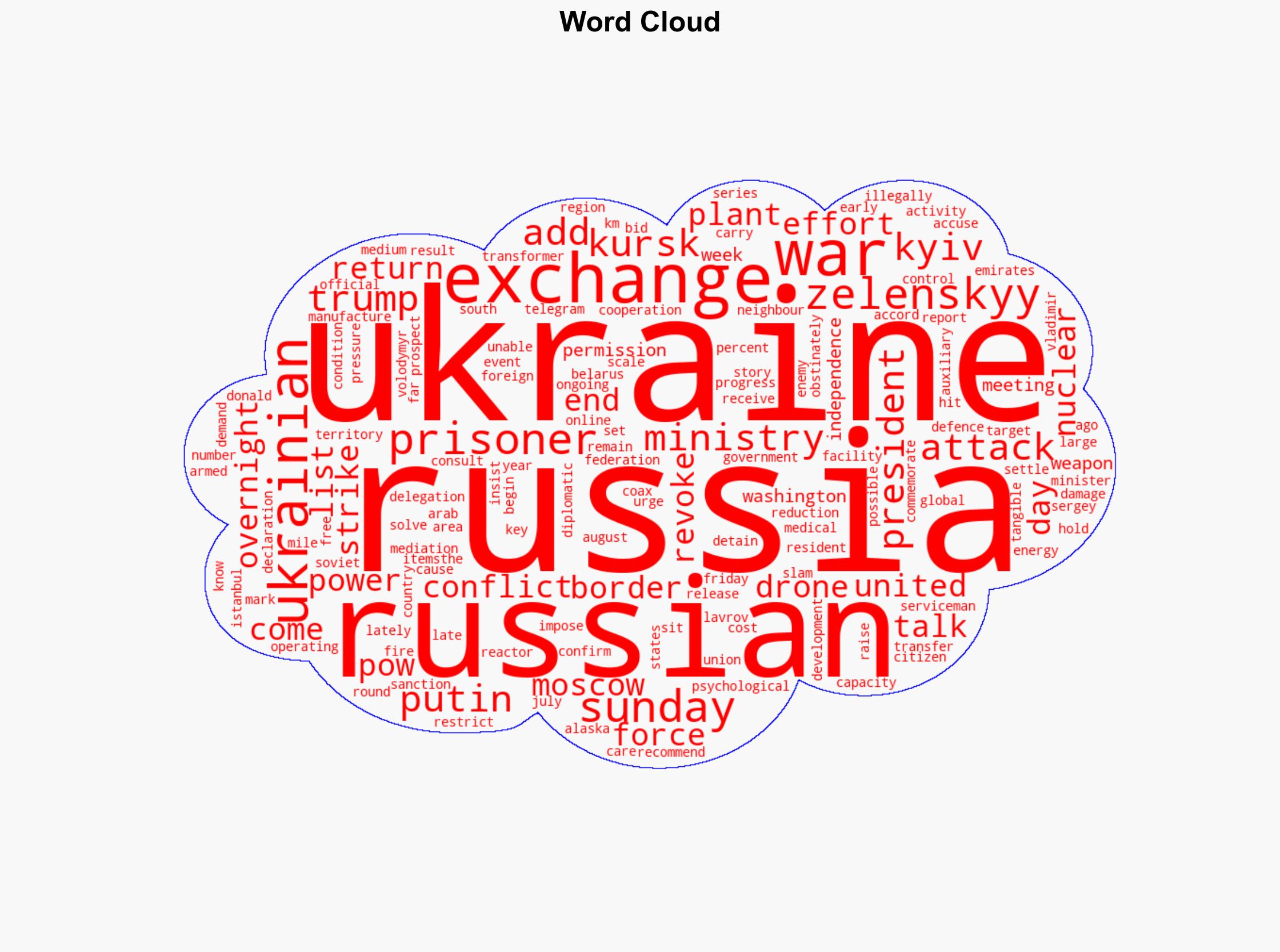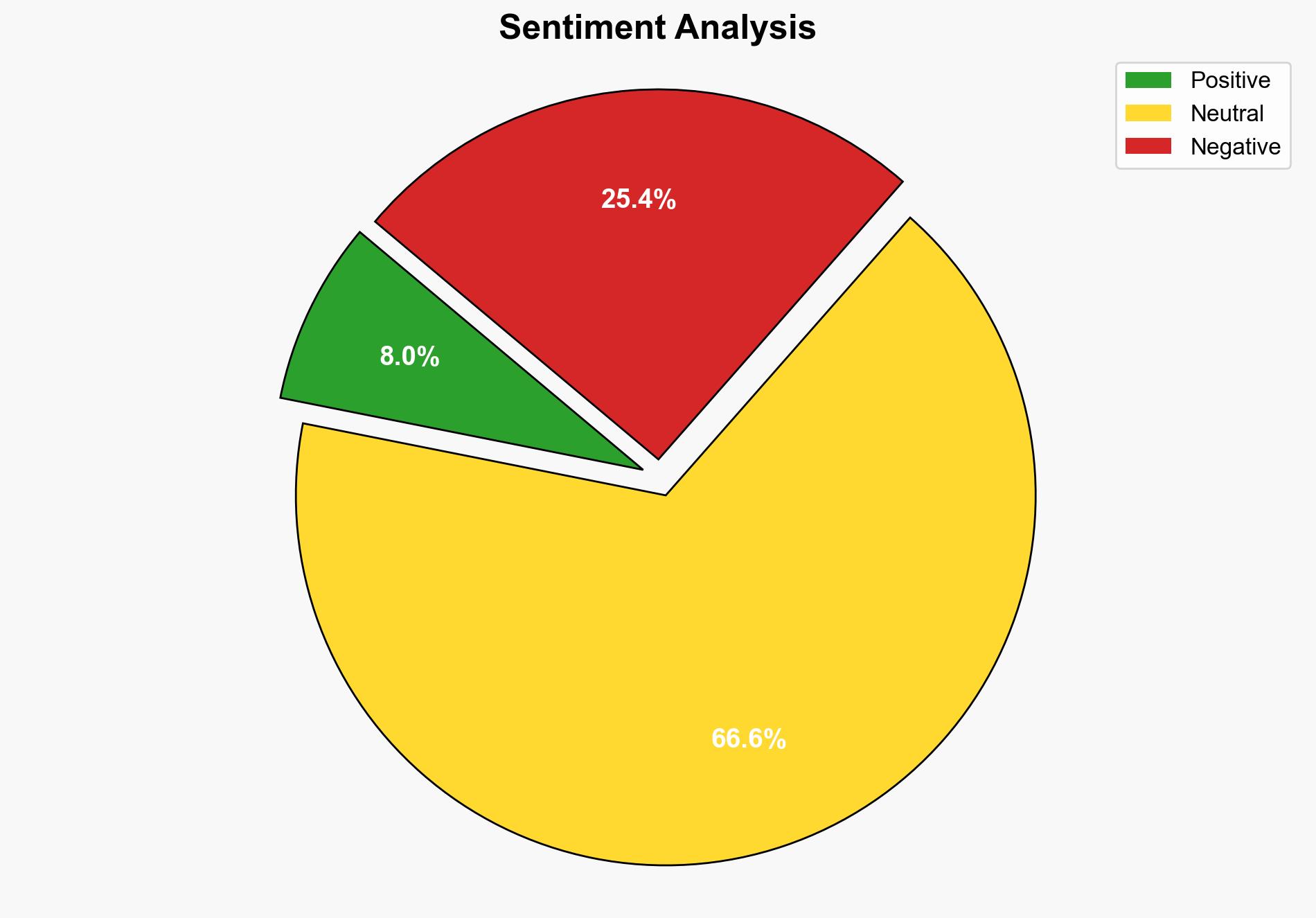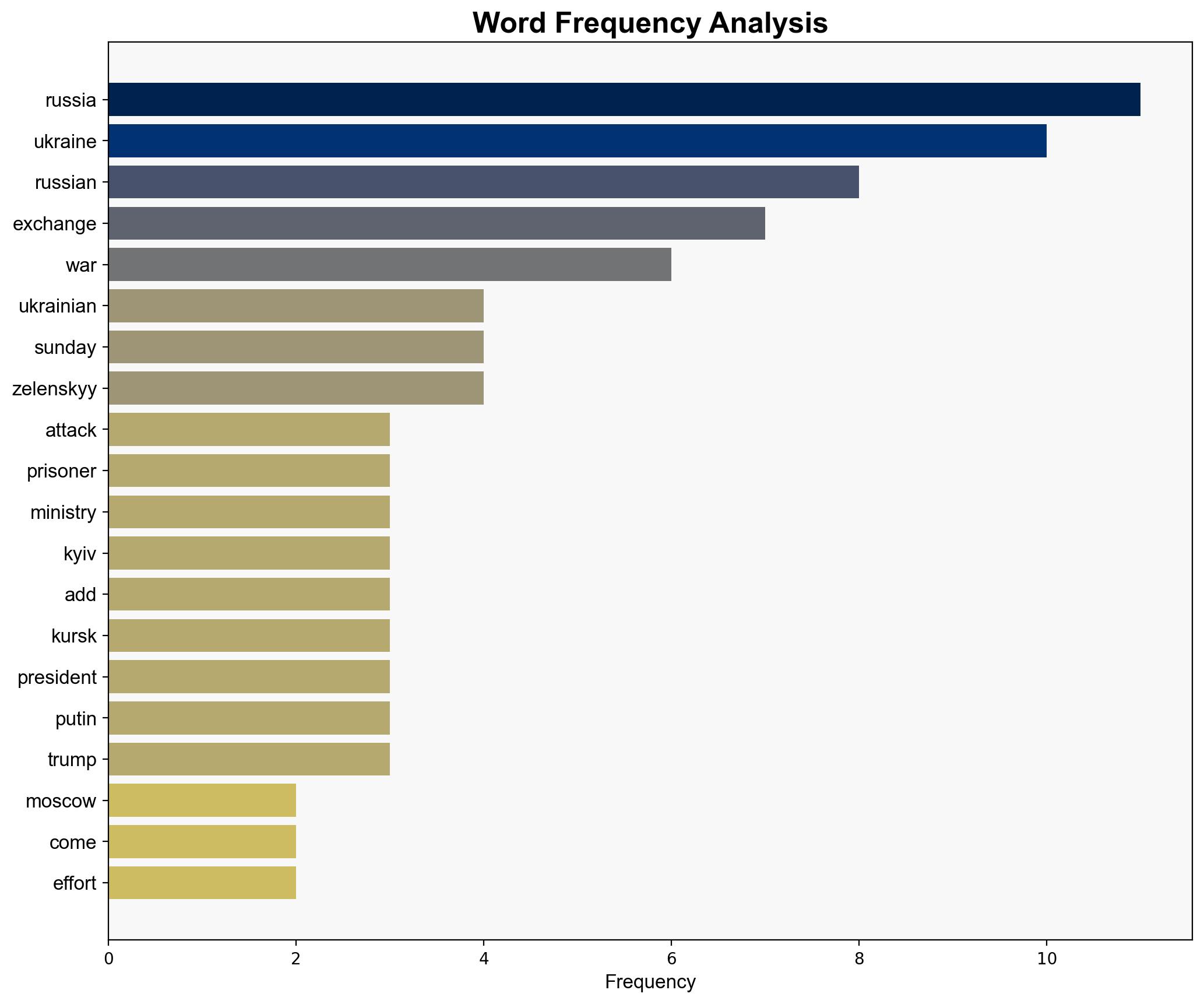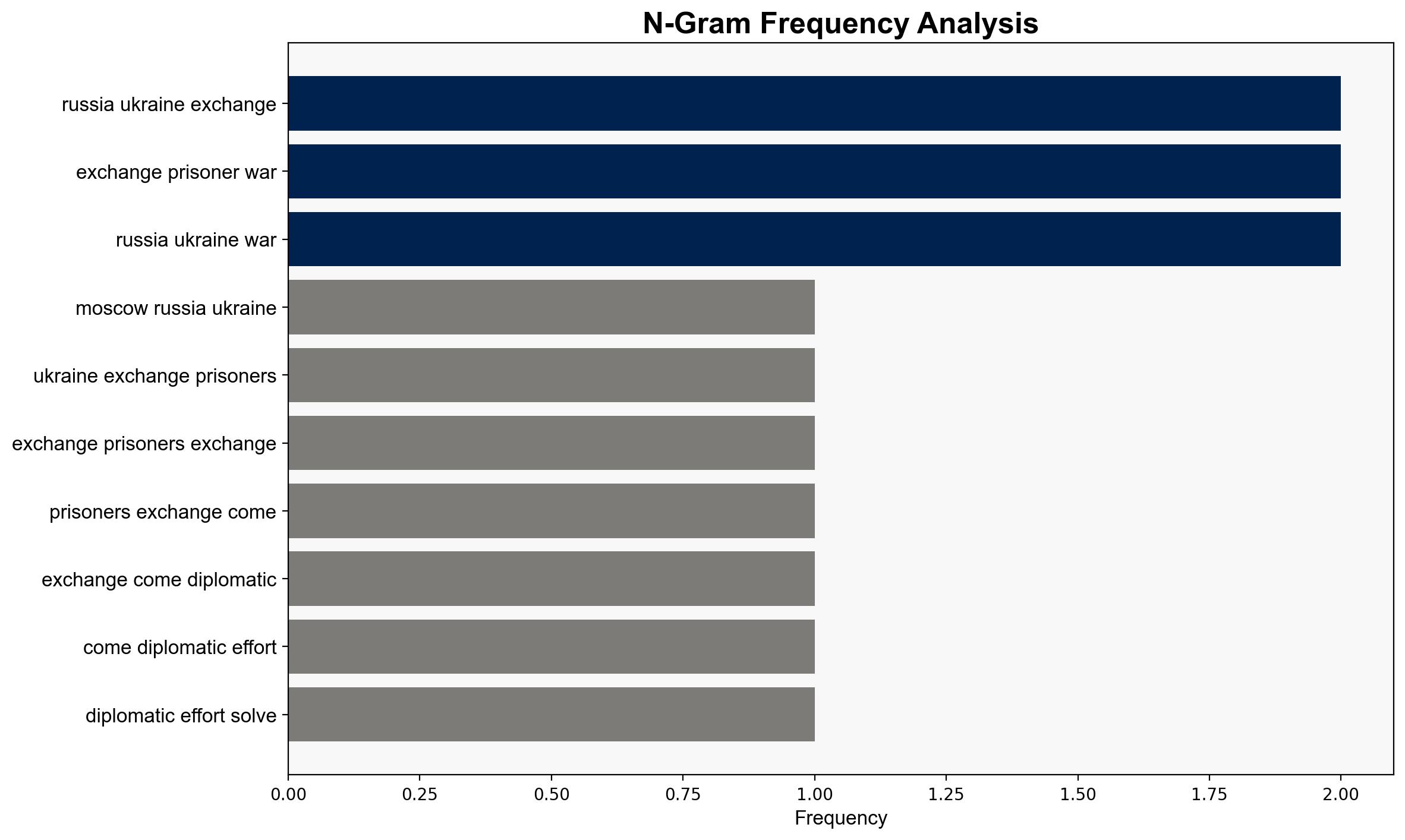Moscow says Russia and Ukraine exchange 146 prisoners each – Al Jazeera English
Published on: 2025-08-24
Intelligence Report: Moscow says Russia and Ukraine exchange 146 prisoners each – Al Jazeera English
1. BLUF (Bottom Line Up Front)
The prisoner exchange between Russia and Ukraine, involving 146 individuals from each side, is a significant diplomatic gesture amidst ongoing tensions. The most supported hypothesis is that this exchange is a strategic move to de-escalate tensions and open channels for further negotiations. Confidence level: Moderate. Recommended action: Monitor subsequent diplomatic engagements and prepare for potential shifts in regional alliances.
2. Competing Hypotheses
1. **De-escalation Strategy Hypothesis**: The prisoner exchange is a deliberate effort by both Russia and Ukraine to reduce hostilities and pave the way for diplomatic negotiations. This is supported by the involvement of the United Arab Emirates as a mediator and the historical context of previous exchanges leading to talks.
2. **Strategic Posturing Hypothesis**: The exchange is a tactical move by Russia to project a willingness to negotiate while simultaneously preparing for further military or political maneuvers. This is indicated by concurrent reports of Ukrainian drone attacks and Russia’s accusations against Ukraine, suggesting ongoing tensions.
3. Key Assumptions and Red Flags
– Assumptions: Both hypotheses assume that the prisoner exchange is a genuine diplomatic effort rather than a propaganda tool. The De-escalation Strategy Hypothesis assumes a mutual interest in reducing conflict, while the Strategic Posturing Hypothesis assumes ulterior motives behind Russia’s actions.
– Red Flags: The timing of the exchange coinciding with reports of drone attacks and accusations of sabotage at a nuclear plant raises questions about the sincerity of the de-escalation efforts. The lack of detailed information about the conditions and terms of the exchange is also a concern.
4. Implications and Strategic Risks
– The prisoner exchange could lead to a temporary reduction in hostilities, potentially opening the door for broader negotiations. However, if the Strategic Posturing Hypothesis holds true, it may be a prelude to further escalation.
– The ongoing cyber and military threats, including drone attacks and potential sabotage, pose significant risks of miscalculation and unintended escalation.
– Geopolitically, the involvement of the United Arab Emirates suggests a broader international interest in mediating the conflict, which could alter regional dynamics.
5. Recommendations and Outlook
- Monitor diplomatic communications and any changes in military postures from both Russia and Ukraine to assess the sincerity of de-escalation efforts.
- Engage with international partners, particularly those involved in mediation, to gather insights and support potential peace initiatives.
- Scenario Projections:
- Best Case: Successful de-escalation leading to formal peace talks.
- Worst Case: Exchange used as a diversion for military escalation.
- Most Likely: Continued low-level conflict with intermittent diplomatic engagements.
6. Key Individuals and Entities
– Volodymyr Zelenskyy
– Vladimir Putin
– Sergey Lavrov
– Donald Trump
7. Thematic Tags
national security threats, cybersecurity, counter-terrorism, regional focus





